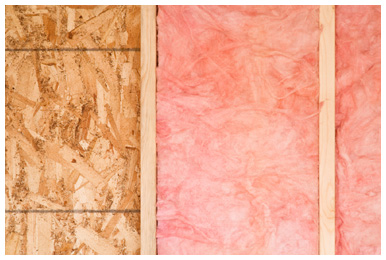39 states, DC add jobs in last 12 months; multifamily starts, permits outrun single-family  Editor’s note: Construction Citizen is proud to partner with AGC America to bring you AGC Chief Economist Ken Simonson's Data DIGest. Check back each week to get Ken's expert analysis of what's happening in our industry.
Editor’s note: Construction Citizen is proud to partner with AGC America to bring you AGC Chief Economist Ken Simonson's Data DIGest. Check back each week to get Ken's expert analysis of what's happening in our industry.
Seasonally adjusted construction employment increased in 39 states and the District of Columbia from April 2013 to April 2014, decreased in 10 states, and remained level in Wyoming, an AGC analysis of Bureau of Labor Statistics (BLS) data released Friday showed. The largest percentage gains were in Florida (12%, 43,300 jobs), North Dakota (11%, 3,400) and Nevada (9.4%, 5,400). Florida also led in number of jobs added, followed by California (39,000, 6.2%) and Texas (23,900, 3.9%). New Jersey lost the most construction jobs (-9,300, -6.8%), followed by New Mexico (-2,000, -4.8%), West Virginia (-1,300, -3.7%) and Alabama (-2.2%, -1,800). The steepest 12-month percentage losses occurred in New Jersey, New Mexico and Alabama. For the month, 29 states and D.C. added construction jobs, 20 states lost jobs and Wisconsin had no change. Texas (7,500, 1.2%) added the most jobs between March and April, followed by California (7,100, 1.1%) and Pennsylvania (6,500, 2.8%). The largest percentage gains for the month were in Rhode Island (5.5%, 900), followed by Iowa (4.6%, 3,100), D.C. (4.5%, 600) and Pennsylvania. The biggest one-month losses were in Virginia (-3,100, -1.7%), New Jersey (-2,800, -2.1%), North Carolina (-2,500, -1.4%), Minnesota (-2,200, -2%) and Arizona (-2,200, -1.8%). Maine (-3.4%, -900) had the steepest monthly decline, followed by New Mexico (-2.7%, -1,100), West Virginia (-2.1%, -700) and New Jersey. (BLS combines mining and logging with construction in D.C. and six states to avoid disclosing data for industries with few firms.)
Housing starts soared 13% at a seasonally adjusted annual rate in April from March and 26% compared with April 2013 levels, the Census Bureau reported Friday. Single-family starts edged up 0.8% for the month and 9.8% year-over-year. Multifamily starts (buildings with 5 or more units) jumped 43% and 70%, respectively. Building permits, a fairly reliable indicator over time of future starts, rose 8.0% for the month and 3.8% year-over-year, with single-family permits up 0.3% from March but down 3.2% from a year before and multifamily permits up 22% and 16%, respectively.
The value of nonresidential construction starts in the first four months of 2014 combined fell 3.6% compared with the same period in 2013, Reed Construction Data reported on Thursday, based on data it collected. Nonresidential building starts slumped 11%, as commercial starts plunged 28% but institutional starts climbed 9.1%. Heavy engineering starts jumped 13%.
The producer price index (PPI) for final demand increased 0.6%, not seasonally adjusted (and seasonally adjusted), in April and 2.1% over 12 months, the Bureau of Labor Statistics (BLS) reported last Wednesday. The PPI for final demand covers not only the prior headline PPI for finished goods (about 34% of total final demand), but also final demand services (64% of the total) and final demand construction (2% of the total). AGC posted an explanation and tables focusing on construction prices and costs. Construction is limited to five types of nonresidential buildings that BLS says make up 34% of total construction. Other building types, along with residential and nonbuilding construction, are not included. There are separate final demand indexes for private capital investment, government, personal consumption and exports, but only the first two are considered buyers of construction, since housing is not measured and buildings are not exported. The PPI for final demand construction, not seasonally adjusted, rose 0.4% in April and 3.2% over 12 months. The overall PPI for new nonresidential building construction—a measure of the price contractors say they would charge to build a fixed set of five categories of buildings—increased 0.4% for the month and 3.4% since April 2013. The PPI for new warehouse construction (11% of the index for new nonresidential buildings) climbed 0.5% in April and 2.8% over 12 months; offices (34% of the total), 0.4% and 2.9%, respectively; industrial buildings (13% of the total), 0.1% and 3.5%; health care buildings (16% of the total), 0.4% and 3.6%; and schools (26% of the total), 0.3% and 4.0%. The PPI for inputs to construction—an average of the cost of all materials used in construction plus items consumed by contractors, such as diesel fuel—rose 0.4% and 1.5%. Major construction materials with notable one- or 12-month price swings included insulation materials, 1.1% and 10.1%, respectively; gypsum products, -3.7% and 5.2%; lumber and plywood, -1.3% and 1.3%; and copper and brass mill shapes, -2.8% and -6.7%. PPIs for new, repair and maintenance work on nonresidential buildings by concrete contractors rose 0.2% and 1.3%; electrical contractors, -0.2% and 1.7%; roofers, 1.2% and 2.8%; and plumbing contractors, 0.2% and 4.6%.
An analysis of Census data on 2012-2013 population changes in metropolitan and non-metro areas posted on March 31 by Brookings Institution demographer William Frey finds large metros adding population faster than smaller ones, while “the population living entirely outside metropolitan areas—nearly two-thirds of the nation’s 3,100 counties—shows an actual population loss for the third year in a row. At the other end of the spectrum, the nation’s largest metropolitan areas are growing at far higher rates,” just under 1.0%. The growth rate for smaller metros (less than 500,000 residents) slipped below 0.6% from double that rate seven years earlier, and 83 (30%) of the 277 “registered absolute population declines.”
The Data DIGest is a weekly summary of economic news; items most relevant to construction are in italics. All rights reserved. Sign up at www.agc.org/datadigest.
AGC's Data DIGest: May 13-16, 2014
by Ken Simonson | May 19, 2014



Add new comment